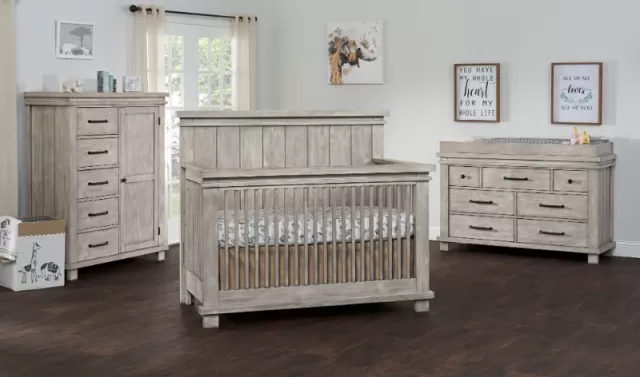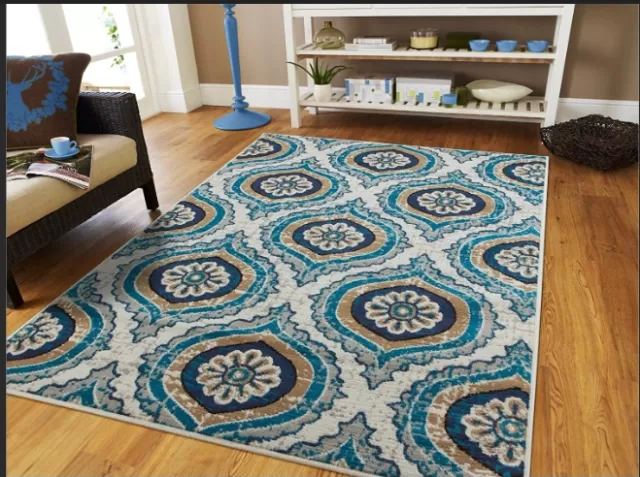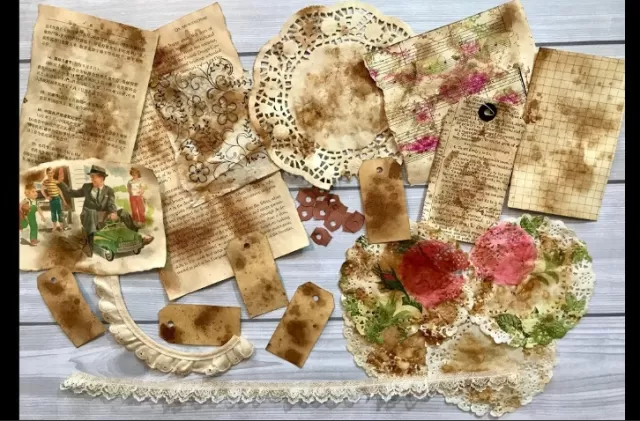Items You Should Never Purchase at a Thrift Shop. Thrift stores beckon with the promise of unique finds at unbeatable prices, a sentiment embraced by many bargain hunters. However, amidst the thrill of discovery, it’s crucial to exercise a judicious approach. Leah Ashley, an interior stylist and vintage expert, advocates for a pragmatic rule of thumb when navigating the aisles of thrift stores.
While the allure of a charming piece may capture your heart, Ashley emphasizes the importance of engaging your head in the decision-making process. Consider the potential hidden costs associated with an item that requires extensive cleaning or refurbishment. Is the effort and expense justified, or would your resources be better invested in acquiring a similar item new?
Ashley’s sage advice encourages thrift store enthusiasts to weigh the balance between the initial bargain and the potential additional investment—be it in time, money, or both. By adopting a thoughtful approach, shoppers can avoid the pitfalls of impulse buying and ensure that their thrifted treasures truly enhance their spaces without becoming unexpected burdens.
In the realm of thrift store shopping, the key lies in striking a harmonious chord between the thrill of discovery and the practicality of thoughtful decision-making. It’s a dance between the heart’s desire for unique finds and the head’s wisdom in assessing the true value of each discovery.
Navigating the Throw Pillow Dilemma: Balancing Style and Hygiene

The world of Throw Pillows presents a conundrum for shoppers—enticing treasures at thrift stores often come with a cautionary tale.
While the specter of bedbugs, lice, and undisclosed bodily fluids looms large, experts offer divergent perspectives on the matter.
Ashley, a savvy shopper, adheres to a cautious approach.
She exclusively invests in throw pillows with zippers, a strategic move that allows her to discard the insert and effortlessly wash the cover. In her discerning eyes, the lack of a zipper renders even the most beautiful handmade pillows a regrettable pass, a sacrifice she deems necessary to maintain hygiene standards.
On the other side of the spectrum, interior designer Debbe Daley proposes a more nuanced solution.
For those captivated by unique finds like needlepoint or silk throw pillows, she suggests considering a visit to the dry cleaner for a Thorough Cleaning. This approach allows enthusiasts to indulge in distinctive pieces without compromising on cleanliness.
As you navigate the throw pillow dilemma, striking a balance between style and hygiene becomes paramount.
Opt for pillows with zippers whenever possible, ensuring a convenient path to cleanliness. However, if the allure of a one-of-a-kind find proves irresistible, a trip to the dry cleaner might just be the ticket to enjoying both style and peace of mind.
In the world of throw pillows, savvy choices and a discerning eye can lead to a harmonious blend of aesthetic satisfaction and practical considerations.
Navigating Thrift Store Finds: A Guide to Linen Shopping
As you navigate the treasure trove of thrift stores, the importance of a discerning eye and practical considerations cannot be overstated.
Ashley, a seasoned thrift store enthusiast, imparts a valuable piece of advice applicable to all purchases—from clothes to home items: always assume that items haven’t been washed or cleaned. Unlike traditional retail experiences where items are pristine, thrift store finds may require a bit of TLC.
Emphasizing the significance of cleanliness, Ashley advocates for the ability to wash or clean every item you purchase.
This practical approach ensures that your newfound treasures can be brought to a level of freshness and hygiene that aligns with your standards.
Willow Wright, owner of Urban Redeux, echoes the sentiment, underlining the importance of personal comfort.
For linens like towels, sheets, and bath mats, she confidently purchases items that can easily withstand a round of bleaching. However, she exercises caution with items showing signs of deep staining, pilling, or being threadbare, recognizing that some flaws may be beyond the reach of even the most diligent cleaning efforts.
As you delve into the world of thrift store linens, strike a balance between your comfort level and the potential for restoration.
Seek out items that can be rejuvenated through cleaning processes that align with your preferences. While some finds may be worth the effort, exercise discernment with items exhibiting more extensive wear and tear.
In the realm of thrift store shopping, a blend of practicality and personal comfort ensures a satisfying and hygienic experience.
Prioritizing Safety and Hygiene: Items to Avoid When Thrift Shopping

When it comes to thrift shopping for specific items, certain considerations should be at the forefront of your mind.
Experts in thrifting offer valuable insights on items to avoid due to safety and hygiene concerns:.
Baby Furniture: While vintage baby furniture may have a charming appeal, it’s crucial to prioritize safety.
According to Daley, older bassinets, cribs, and playpens may not adhere to current child safety standards. Potential risks, such as lead paint or other outdated features, make it unsafe for infants or toddlers.
Similarly, outdated car seats and baby gear should be avoided to ensure the well-being of your child.
Cutting Boards: Ashley advises against purchasing cutting boards or butcher blocks with the intent of using them in the kitchen.
The challenge lies in the difficulty of thoroughly disinfecting these items without the use of chemicals, raising hygiene concerns.
Rugs: Willow Wright recommends caution when it comes to purchasing rugs from thrift stores.
Machine-made rugs, often found in thrift stores, can be challenging and pricey to clean. Additionally, the unknown presence of pet stains or odors may outweigh the cost of cleaning.
Vintage rugs, which are exceptions, are typically not commonly found in thrift stores.
As you embark on your thrifting adventures, keep these insights in mind to make informed and safe choices.
Prioritize the well-being of your family by steering clear of items that may compromise safety or prove challenging to maintain in a hygienic condition.
Practical Considerations for Caned Furniture: Weighing the Costs
Caned furniture exudes a Timeless Charm, but Debbe Daley offers practical advice when it comes to considering these pieces during your thrifting adventures.
While the allure of a beautiful caned piece may be strong, it’s essential to evaluate the potential costs and challenges associated with repairs.
Daley highlights a specific concern: rips in caned furniture.
Repairing a rip in cane can be a challenging and costly endeavor. In light of this, she advises caution, suggesting that if you cannot personally tackle the repair through a DIY approach, it might be best to steer clear of a caned chair with tears.
This guidance emphasizes the importance of understanding both the aesthetic appeal and the potential maintenance challenges associated with caned furniture.
While these pieces can add a touch of elegance to your home, it’s crucial to weigh the practical aspects, considering your ability to address any needed repairs. As you navigate thrift stores, use this insight to make informed decisions about incorporating caned furniture into your space, ensuring that your thrifting endeavors align with both your style preferences and practical considerations.
Navigating Stains in Thrift Store Finds: Considerations for Cleaning and Restoration

When it comes to thrift store shopping, the allure of stained items can be tempting, especially if you believe in your ability to restore them.
However, Debbe Daley provides valuable insights into the challenges associated with stained items in thrift stores.
Stain Removal Challenges: If an item is in a thrift store with visible stains, it’s likely that the previous owner attempted to remove the stain without success.
Daley suggests that, despite your confidence in thorough washing and stain removers, some stains may prove persistent and challenging to remove effectively.
Specific Stains to Be Wary Of: Certain stains, such as those from nicotine, water, and mold, may be particularly stubborn and resistant to traditional cleaning methods.
Daley advises caution when it comes to these types of stains, emphasizing that furniture with visible mold or odor should be left behind unless you are prepared for a comprehensive restoration process.
Full Restoration Considerations: When dealing with furniture that exhibits visible mold or an unpleasant odor, Daley recommends leaving it behind unless you’re ready and willing to undertake a full restoration.
Full restoration involves extensive cleaning, repairs, and potentially refinishing to bring the item back to a desirable and safe condition.
As you explore thrift stores, keep these considerations in mind when encountering stained items.
While some stains may be successfully addressed, others may pose significant challenges that outweigh the potential benefits. Make informed decisions based on the type of stain and your willingness to invest time and effort into restoration if necessary.
*The information is for reference only.